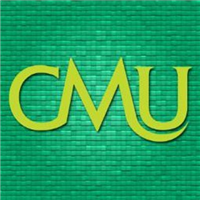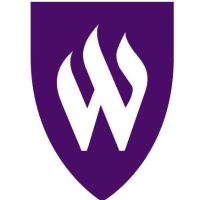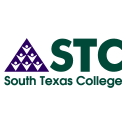What do they do?
Develop or apply mathematical or statistical theory and methods to collect, organize, interpret, and summarize numerical data to provide usable information. May specialize in fields such as biostatistics, agricultural statistics, business statistics, or economic statistics. Includes mathematical and survey statisticians.
Also known as:
Biometrician, Demographer, Education Research Analyst, Environmental Statistician, Mathematical Statistician, Psychometric Consultant, Quantitative Methodologist, Research Analyst, Research Scientist, Researcher, Statistical Analyst, Statistical Consultant, Statistical Reporting Analyst, Statistician, Trend Investigator
-
34.7%
Change
Ranks #27 in job growth rate120Job Openings
Ranks #19 in net job growth
-
Cuyamaca College
El Cajon, CA
-
Irvine Valley College
Irvine, CA
-
College of the Canyons
Santa Clarita, CA
-
Los Angeles Pierce College
Woodland Hills, CA
-
Clovis Community College
Fresno, CA
Looking for colleges that offer a specific major? Use the College Match Tool to find your best-matched schools and discover your estimated Net Price!
- Doctorate or Professional Degree (12%)
- Master's degree (36%)
- Bachelor's degree (39%)
- Associate's degree (3%)
- Some college, no degree (6%)
- High school diploma equivalent (3%)
- Less than high school diploma (<1%)
Most Popular Majors that prepare Statisticians
-
#1
-
Degrees Granted
4,224
-
Female Students
1,357
-
Male Students
2,867
-
Median Starting Salary
$54,000
-
-
#2
-
Degrees Granted
12
-
Female Students
6
-
Male Students
6
-
Median Starting Salary
$57,200
-
-
#3
-
Degrees Granted
2
-
Female Students
1
-
Male Students
1
-
Median Starting Salary
$56,100
-
-
#4
-
Degrees Granted
2
-
Female Students
0
-
Male Students
2
-
Median Starting Salary
$56,100
-
-
#5
-
Degrees Granted
1
-
Female Students
0
-
Male Students
1
-
Median Starting Salary
$53,900
-
People in this career often have these skills:
- Mathematics - Using mathematics to solve problems.
- Critical Thinking - Using logic and reasoning to identify the strengths and weaknesses of alternative solutions, conclusions, or approaches to problems.
- Reading Comprehension - Understanding written sentences and paragraphs in work-related documents.
- Active Listening - Giving full attention to what other people are saying, taking time to understand the points being made, asking questions as appropriate, and not interrupting at inappropriate times.
- Complex Problem Solving - Identifying complex problems and reviewing related information to develop and evaluate options and implement solutions.
- Speaking - Talking to others to convey information effectively.
- Active Learning - Understanding the implications of new information for both current and future problem-solving and decision-making.
- Writing - Communicating effectively in writing as appropriate for the needs of the audience.
- Science - Using scientific rules and methods to solve problems.
People in this career often know a lot about:
- Mathematics - Knowledge of arithmetic, algebra, geometry, calculus, statistics, and their applications.
- English Language - Knowledge of the structure and content of the English language including the meaning and spelling of words, rules of composition, and grammar.
- Computers and Electronics - Knowledge of circuit boards, processors, chips, electronic equipment, and computer hardware and software, including applications and programming.
People in this career often have talent in:
- Mathematical Reasoning - The ability to choose the right mathematical methods or formulas to solve a problem.
- Number Facility - The ability to add, subtract, multiply, or divide quickly and correctly.
- Inductive Reasoning - The ability to combine pieces of information to form general rules or conclusions (includes finding a relationship among seemingly unrelated events).
- Oral Comprehension - The ability to listen to and understand information and ideas presented through spoken words and sentences.
- Written Comprehension - The ability to read and understand information and ideas presented in writing.
- Oral Expression - The ability to communicate information and ideas in speaking so others will understand.
- Written Expression - The ability to communicate information and ideas in writing so others will understand.
- Deductive Reasoning - The ability to apply general rules to specific problems to produce answers that make sense.
- Near Vision - The ability to see details at close range (within a few feet of the observer).
- Information Ordering - The ability to arrange things or actions in a certain order or pattern according to a specific rule or set of rules (e.g., patterns of numbers, letters, words, pictures, mathematical operations).
- Category Flexibility - The ability to generate or use different sets of rules for combining or grouping things in different ways.
- Speech Clarity - The ability to speak clearly so others can understand you.
- Problem Sensitivity - The ability to tell when something is wrong or is likely to go wrong. It does not involve solving the problem, only recognizing that there is a problem.
- Speech Recognition - The ability to identify and understand the speech of another person.
People in this career often do these activities:
- Analyze data to identify trends or relationships among variables.
- Evaluate technical data to determine effect on designs or plans.
- Determine appropriate methods for data analysis.
- Evaluate data quality.
- Prepare data for analysis.
- Present research results to others.
- Prepare graphics or other visual representations of information.
- Prepare analytical reports.
- Design research studies to obtain scientific information.
- Apply mathematical principles or statistical approaches to solve problems in scientific or applied fields.
- Evaluate project designs to determine adequacy or feasibility.
- Supervise information technology personnel.
- Update knowledge about emerging industry or technology trends.
- Write computer programming code.
- Implement security measures for computer or information systems.
- Install computer software.
- Design software applications.
This page includes data from:

 Occupation statistics: USDOL U.S. Bureau of Labor Statistics Occupational Employment Statistics
Occupation statistics: USDOL U.S. Bureau of Labor Statistics Occupational Employment Statistics









